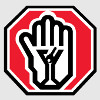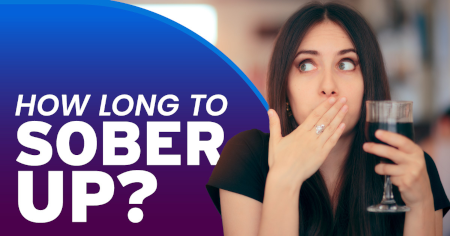 Question: I have a question regarding the length of time it takes to sober up to a point where you are legal to drive.
Question: I have a question regarding the length of time it takes to sober up to a point where you are legal to drive.

Today a co-worker was coming to work and drove through a speed trap where he was stopped.
The officer said he noticed an alcohol odour and gave him a breathalyzer where the reading was .055. The man said this had to be wrong and got a second reading at the station of .04.
He affirms that he had been drinking the evening before (6-8 drinks depending on his opinion of what a drink size is) and that he was in bed at 10:30. He weighs about 200 lbs.
So there was at least 9 or 10 hours for the alcohol to metabolize and according to the internet on repeated sites all of the alcohol should have been gone.
Something does not make sense to me and I would appreciate your experienced thoughts on how long it takes to sober up.
Answer
It Takes Time to Sober Up
In general, the average person eliminates about 0.015 or 15 mg% per hour. So, if your blood alcohol concentration (BAC) is .15 or 150 mg% when you stop drinking, you will take 10 hours to sober up and your body is able to rid itself of the alcohol that you have consumed.
If we look at your friend blowing .05 at 7:30 am for the sake of illustration, with the last drink being finished at 10:30 pm, there was a 9 hour interval.
We'll give him an hour for all the alcohol that was in his stomach at 10:30 to be absorbed, so his body really spent about 8 hours metabolizing and eliminating alcohol without him adding to it.
8 times 15 mg% is 120 mg%. Add the 50 for his test reading and his peak blood alcohol was probably around 170 mg%.
Counting Standard Drinks
For a 200 pound man to have a BAC of 170 mg% he would need to have consumed about 9 standard drinks. A standard drink is 12 oz. of regular beer, 5 oz. of wine or 1.5 oz. of hard liquor. So, if your friend was not measuring, his estimate is fairly close.
It's Easy to Make a Mistake
This has caught a few drivers off guard during my policing career. People tend to think that if they stop late in the evening they should be good to go by breakfast.
However, as you have seen, if you have a high BAC when you stop it can take a long time before you fall below the 50 mg% IRP trigger level.
High Readings are not That Uncommon
It was not uncommon for me to be dealing with drivers whose BAC at time of driving was between 250 and 300 mg% at my first posting. For these people the entire following work day may have been spent over the limit!
Learn More
More information from this site plus reference links.
Share This Article
For the record and for the maths, it is not correct that a pint is 16 ounces. In Canada a pint is 20 ounces (568 ml). Unfortunately some establishments continue to chose to sell 16 ounce glasses as pints. If you ordered a pint of beer and get a 16 ounce glass please file a complaint with the Canadian Government on the Measurement Canada webpage at http://fednor.gc.ca/eic/site/mc-mc.nsf/frm-eng/MJAT-AJYMDX
So 3 pints are actually 5 standard drinks. Be aware.
- Log in to post comments
The 500 mil can of beer is actually 16.9 american ounces.
- Log in to post comments
- Log in to post comments

Pints